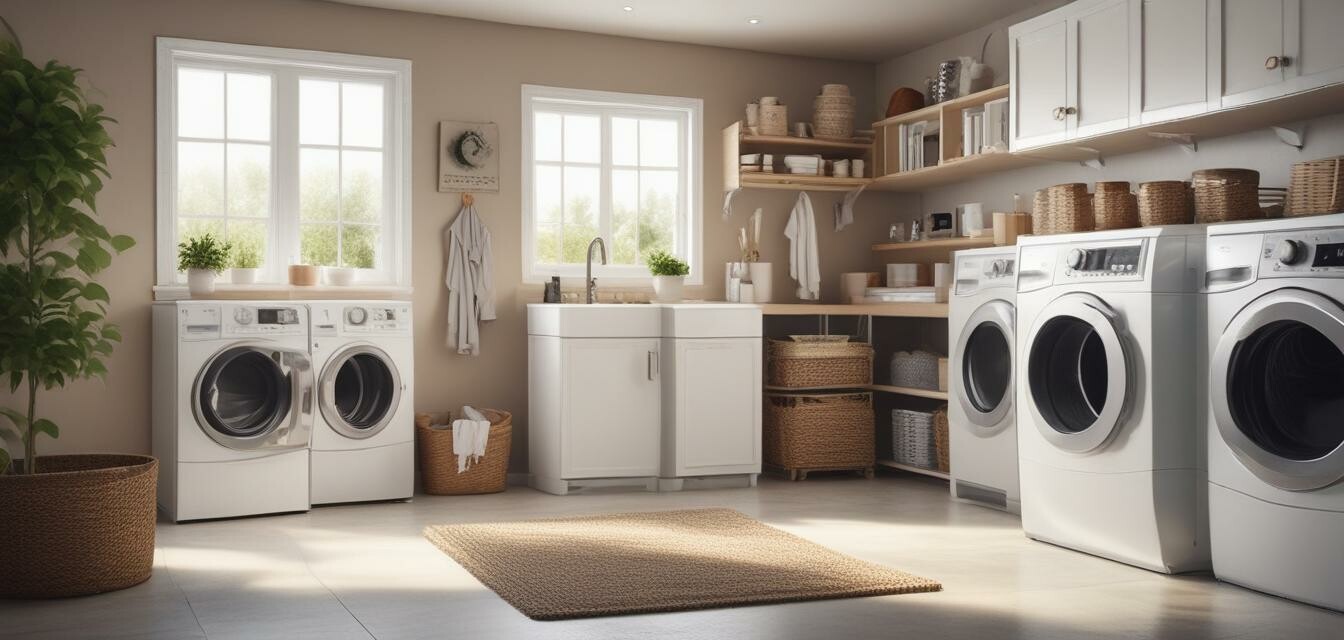
Tips for Reducing Energy Use in the Laundry Room
Key Takeaways
- Choose energy-efficient washers and dryers to minimize energy consumption.
- Utilize optimal settings and full loads to maximize efficiency.
- Regular maintenance ensures your appliances operate at peak performance.
- Time your laundry loads to take advantage of off-peak energy rates.
- Explore eco-friendly laundry care practices for an even greener approach.
Reducing energy use in your laundry room can significantly impact both your utility bills and the environment. The laundry room is a key area in any home where energy consumption can add up quickly, making it essential to optimize your approach to washing and drying clothes. In this article, we will explore practical tips and best practices that will help you save energy while keeping your laundry fresh and clean.
1. Choose energy-efficient appliances
The first step to reducing energy use in your laundry room is investing in energy-efficient washers and dryers. Look for models with the Energy Star label, which signifies that they meet energy efficiency guidelines set by the U.S. Environmental Protection Agency (EPA).
Benefits of energy-efficient appliances
- Lower energy bills
- Reduced environmental impact
- Enhanced performance and longevity
2. Optimize wash settings
Using the right wash cycle and settings can dramatically affect energy consumption. Here are some tips to help you choose effectively:
| Wash Setting | Recommended Use | Energy Use |
|---|---|---|
| Cold Water | Most loads, especially delicate fabrics | Reduces energy use significantly |
| Warm Water | Heavily soiled clothing | Moderate energy use |
| Hot Water | Sanitizing loads (linens, towels) | High energy use |
3. Load size matters
Always aim to run full loads for both the washer and dryer. This not only conserves energy but also saves water, detergent, and time. Here’s how:
- For the washer: Avoid running small loads. Keep your washer full (but not overloaded) for maximum efficiency.
- For the dryer: Separate clothes by weight and fabric type to ensure even drying and avoid running multiple small loads.
4. Regular maintenance
Regular maintenance can keep your appliances in prime condition, ensuring they use less energy. Here are some maintenance tips:
- Clean the lint filter in your dryer after every use to improve airflow and efficiency.
- Check for leaks or hose damage in your washer to prevent water waste.
- Schedule routine inspections to ensure the integrity of hoses and electrical connections.
5. Time management and off-peak hours
Energy rates can fluctuate based on usage. By utilizing off-peak hours (usually late evenings or early mornings), you can save money while reducing energy demand during peak times. Consider scheduling your laundry loads during these hours.
6. Eco-friendly laundry tips
Besides using energy-efficient appliances, you can adopt various eco-friendly laundry practices:
- Use biodegradable detergent to reduce water pollution.
- Try air-drying clothes to save energy; hang them on a clothesline or drying rack.
- Opt for DIY laundry solutions, like vinegar to soften clothes.
Conclusion
By implementing these tips in your laundry room, you are taking significant steps toward reducing your energy consumption. Choosing energy-efficient appliances, optimizing your wash settings, maintaining your equipment, and managing your laundry timing are all effective strategies. Remember, every little bit helps, and these changes contribute to a healthier planet and lower utility bills.
Pros
- Lower energy bills with efficient practices.
- Reduced environmental impact.
- Improved appliance longevity.
Cons
- Initial cost of energy-efficient appliances can be higher.
- Requires commitment to maintain practices.
For more insights on optimizing your energy use, check out our other articles in the Tips and How-to Articles section.
